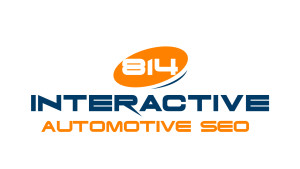Your buyers are probably concerned about the gas mileage of the cars they buy.
They want cars that will make the most of the gas that they buy and put into those cars.
More and more, consumers are less concerned with having a flashy car—they want one that will go the distance.
You should expect the same from your automotive SEO.
SEO shouldn’t just be flashy.
It can be easy to be blinded by the jargon and by the experts that seem to be spewing good advice about what you should and shouldn’t do with your website.
SEO is expensive, whether you do it yourself or whether you pay someone else to do it.
It takes time and capital to work properly.
This means that you shouldn’t invest in a campaign that doesn’t have great gas mileage.
Here are some ways to make sure you get the most out of your automotive SEO:
Invest in a Hybrid
Can SEO campaigns be hybrids?
When we talk about SEO, we often talk only about onsite optimization.
While this type of optimization is extremely important, there are also lots of other types of optimization that are equally important. Just like more and more car buyers are looking for hybrids that can really extend the life of a tank of gas, you should be looking for an automotive SEO campaign that works in more than one way.
Search engines are no longer just looking for websites with great onsite optimization.
They are also looking for websites that have offsite signals.
These signals increase the authority of your website and make it look more relevant.
While great content used to be enough for search engines, they are now looking for links to your website from other websites.
Why do you need these types of links?
Search engines see these links as votes of confidence.
They make your webpage look more legitimate and the more votes you have, the higher on Google’s totem pole you will appear.
It is no longer just enough to have a website and blog that is packed with relevant content.
You need to be hybridizing your SEO campaign to ensure that it is really pulling its weight.
Guest blogging is one of the very best way to build these kinds of links, but any offsite location where you can put a link (and it is actually relevant) can be a great place to start.
Get Rid of Excess Weight
Car manufacturers are making their cars faster and use less gas by using lighter materials to build those vehicles.
Bigger used to be better, but that isn’t necessarily the truth anymore.
As gas prices go up, people tend to stick to economical sedans and smaller SUVs because these vehicles get much better gas mileage and are therefore much less likely to hurt you at the pump.
How can this same principle apply to your search engine optimization campaign?
It’s a tenet of SEO that Google loves big websites—but is that really still true?
In the past, people were adding hundreds upon hundreds of pages to their websites, trying to make them as big as possible, believing that the extra gravity would pull more visitors towards them.
While that might still work in some cases, having hundreds or even just dozens of pages that contain essentially no useful or new information and instead are loaded with useless or duplicate content, can drag a website down in the search rankings, instead of buoying it up.
Don’t misunderstand: Google still love lots of content.
What it doesn’t love is irrelevant, copied, or boring content.
Having a huge website will only help you if the content doesn’t fall into the following two categories:
First, the pages have terrible content.
There is only so much that can be said about your dealership, the vehicles you sell, and the industry as a whole.
Sometimes website owners would scrounge up content by copying it from other websites or by adding what is essentially gibberish, packed with some keywords, onto webpages that no site visitor would ever really see.
Some automotive dealerships will make a separate page for every single car on their lot.
While this can be useful for site visitors who want to see exactly what your dealership has before they plan their visit, some dealerships would fill those webpages with useless, keyword-dense content.
Second, the pages were temporary.
Because inventory is eventually sold off or sent to another dealership, those pages eventually have to be removed. That means broken links, redirect errors, and 404 errors—all of which are terrible for SEO, no matter how massive they make your website look (at a glance).
Make Sure Your Oil is Being Changed
Most vehicles should have their oil changed every three to six months, right?
That same principle applies when it comes to your SEO. Driving around with years old oil (operating a website with years old SEO) is bad for your car (website).
Good automotive SEO is tracked and adjusted for maximum benefit.
Keyword rankings are carefully watched, changes are tested, and when the website starts to plateau, action is taken.
All of this should ensure that your website’s SEO campaign operates smoothly, just as an oil change ensures that a car is running smoothly.
The principle also applies to your keywords—once they have done their job, once your website hits page ranking #1 for a certain keyword, it is time to optimize for a new keyword. Monitor your ranking to make sure you don’t lose that #1 spot, but don’t continue to run on oil that has already done it’s job.




